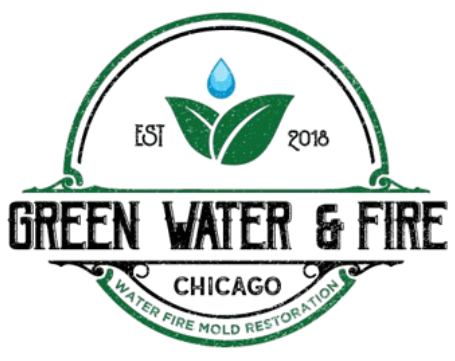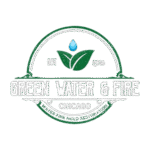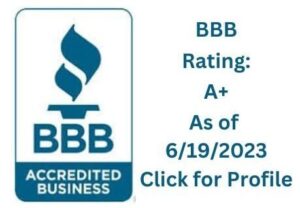When mold grows out of control in residential and commercial buildings, it can cause all sorts of headaches for you. If it remains untreated, it is a health hazard and can result in serious structural damage. That’s where companies that provide mold remediation services are. “What is the average time for mold remediation for a home or business?” In this guide, we’ll explore the professional mold removal timeline, the factors that determine the duration of the process.
What Is Mold Remediation?
Mold remediation is a four-step process used to treat the problem of mold growth in the home. It is something more than merely cleaning the visible mould; it is a process to ensure that the mould does not come back.
Professional mold remediation includes:
- Evaluating the extent of the mold issue
- Isolating the affected area
- Removing contaminated materials
- Clean and disinfect surfaces
- Unblocking and drying the area
- Preventing future mold growth
The aim is not necessarily to eliminate every spore but rather to restore indoor mold levels to a normal and healthy environment.
Why Mold Remediation Is Important

Mold can lead to respiratory problems, allergic reactions, and other health issues, especially for people with weakened immune systems. Furthermore, if left to spread, mold can cause harm to your walls, floors, furniture, and even your building’s infrastructure.
Symptoms to Look Out For: Some red flags that will let you know when mold remediation is necessary are:
- Musty odors
- Visible patches of mold on walls or other surfaces
- Persistent allergic reactions
- Water damage or leaks
By dealing with mold problems quickly with expert mold remediation, you can stop these spores from spreading, limiting them from damaging your property in the long run.
Factors That Influence the Timeline
The length of time it takes to remove mold can differ depending on the amount and extent of the problem. The average mold remediation timeframe is about 1 to 5 days. But this schedule can vary depending on a few important factors:
1. Extent of Mold Contamination
Larger infestations or those where mold is found in several places will take longer to remediate.
2. Type of Mold
While all mold should be removed professionally, some varieties, such as black mold (Stachybotrys chartarum), may require more elaborate safety precautions and take longer to remove.
3. Building Size and Layout
Small home mold removal can be done in a couple of days. The procedure for a commercial or multi-unit property, on the other hand, might take a week or more.
4. Cause of Mold Growth
Mould can appear after water damage. If the source of a moisture issue isn’t dealt with ( plumbing leaks or roof damage), getting rid of mold isn’t going to cut it. And fixing these bumps slows things down.
5. Testing and Clearance
Post-remediation testing and air scrubbers for mold can be employed to ensure that mold levels are returned to normal. These steps can take up to 24–48 h.
The Mold Remediation Process

1. Inspection and Assessment
A certified technician surveys the property and then determines where the mold is located, as well as the cause of the moisture. This step involves air testing on the building’s surfaces to identify molds and count their concentration.
2. Containment
Affected areas are contained using plastic sheeting, and negative air pressure is used to avoid cross-contamination of mold spores. It is installed, and air filtration mechanisms are used, such as a HEPA filter or an air scrubber for mold.
3. Mold Removal
If necessary, porous material such as drywall, insulation, and carpet is also taken out. Non-porous surfaces will be wiped down and treated with antimicrobial solutions or fogged for mold.
4. Drying and Dehumidification
This step will dry the space completely with fans, dehumidifiers, and moisture meters that will help to reduce future mold development.
Restoration
After the mold has been eschewed, restoration of the mold begins. There may be drywall that needs to be replaced, painting, or work on the structure.
Post-Remediation Verification
End air tests clear that the mold and the environment have been remediated and reoccupied safely.
How long does black mold take to grow?
Learning how mold grows can help you prevent it from happening in the future. Mold can develop in just 24 to 48 hours in damp conditions.
However, Black mold can start growing quickly within the first 24 to 72 hours in a damp, moist environment.
Visible colonies may take several days to develop, but they can spread quickly if not treated.
Mold can generally take hold as soon as one to two days after water intrusion.
How Long Does it Take for Vinegar to Kill Mold?
Vinegar is about 80 percent effective in killing most mold species on non-porous surfaces, not the best results in the industry, and certainly still not performance-based remediation. Vinegar needs to be in the place for a minimum of an hour and is effective only on brand-new, young things.
And finally, running a mold purifier, or even just a dehumidifier, will drastically decrease the chances of the mold returning. Mold loves damp, stagnant air. Air purifying systems with HEPA filters can also help catch spores and maintain indoor air.
Conclusion:
So, How Long Does Mold Remediation Take? Although the usual duration is 1 to 5 days, various factors may delay the timeline. But hiring the right experts and resolving the moisture issue are key to getting rid of it. Moreover, if left unchecked, mold can cause big damage and health problems. If you detect the issue, call mould remediation services at once to inspect and address the problem. A professional will have access to the tools, information, and certifications that are required to remediate mold in a safe and ideal manner.
FAQs
Mold removal/ Mold remediation is the process of determining, containing, and removing or cleaning up mold, including the prevention of mold growth in the sanitary areas of a structure. It’s more than just cleaning, it’s about attacking the source.
It usually lasts from 1 to 5 days. But big cases can take a longer time based on the extended work and the size of the infestation.
In some cases, yes. But if the contamination is widespread or involves toxic molds like black mold, it may be safer to relocate temporarily.
It depends on your policy and what caused the mold. However, you can cover it if it was due to a covered peril, such as a burst pipe.
Fogging delivers a mist of an anti-microbial solution deep into inaccessible areas where the mold spores are killed while reducing the possibility of future growth.


















